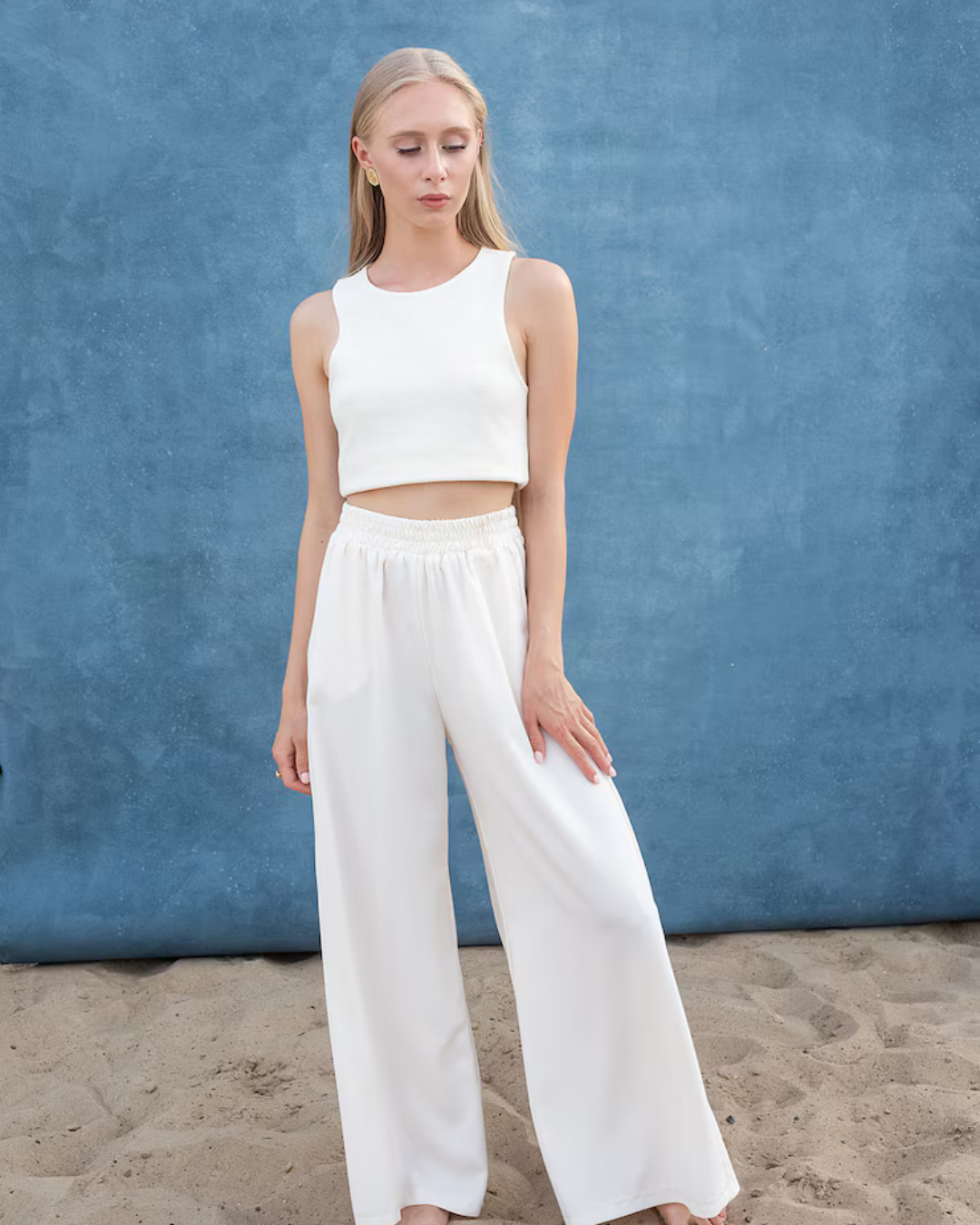As sustainable fashion gains momentum in 2025, one wardrobe staple is quietly making waves: hemp pants. Known for their comfort, durability, and planet-friendly profile, hemp pants offer a powerful alternative to synthetic and conventional cotton trousers. But what makes this fabric so special? And how exactly are hemp pants made?
In this blog, we explore the full journey of hemp—from farm to fabric—and uncover the environmental and lifestyle benefits that make hemp pants a must-have in today’s conscious wardrobe.
What Is Hemp Fabric?
Hemp fabric is derived from the stalk of the Cannabis sativa plant, but unlike marijuana, it contains negligible levels of THC. For centuries, hemp has been cultivated for its strong natural fibers, traditionally used in rope, sails, and clothing.
Unlike cotton or synthetic fabrics, hemp is grown with minimal water, requires no synthetic pesticides, and enriches rather than depletes the soil. These properties make hemp pants a clear winner for sustainable fashion enthusiasts.
How Hemp Pants Are Made – From Plant to Pant
To appreciate the eco-benefits of hemp pants, it’s essential to understand the steps involved in their production.
1. Cultivating the Hemp Plant
Hemp is one of the fastest-growing crops in the world, taking only 90–120 days to mature. Farmers love it because:
- It grows densely, leaving little room for weeds
- It requires 50% less water than cotton
- It replenishes the soil with nutrients
No chemical fertilizers or pesticides are needed—making it safer for the earth and the people who grow it.
2. Retting and Fiber Extraction
Once harvested, the stalks undergo a process called retting, where microbes naturally break down the pectin that binds the fibers. The stalks are then separated into bast fibers (used for textiles) and hurds (used in building materials or paper).
3. Spinning into Yarn
The extracted bast fibers are combed and aligned before being spun into yarn. Modern methods may blend hemp with organic cotton or bamboo to enhance softness without sacrificing durability.
This is where hemp pants get their signature texture—crisp yet breathable, sturdy yet comfortable.
4. Weaving and Finishing
The yarn is woven into fabric using eco-conscious processes. Depending on the finish, it can feel like linen or be blended for a smoother touch.
Natural dyes or low-impact dyes are often used to keep the chemical load minimal. Some brands also employ enzymatic softening, ensuring your hemp pants feel great from the first wear.
5. Tailoring and Final Touches
The final fabric is cut, stitched, and finished into pants that are designed for longevity. Many hemp pants come with:
- Reinforced seams
- Natural buttons or recycled zippers
- Minimalist packaging to reduce waste
Why Hemp Pants Are Better for the Earth
Now that you understand how hemp pants are made, let’s dive into why they’re considered one of the most sustainable choices in fashion.
1. Low Water Consumption
Conventional cotton is one of the thirstiest crops on the planet. In contrast, hemp requires far less water and grows even in drought-prone areas.
Producing 1 kg of hemp fabric takes about 50% less water than producing the same amount of cotton—making it a smarter choice for a water-stressed planet.
2. Grown Without Harmful Chemicals
Hemp is naturally pest-resistant, eliminating the need for synthetic pesticides or herbicides. This means fewer chemicals leach into our waterways and soil.
As a result, hemp farming promotes healthier ecosystems and reduces harm to farmers and communities living near crop fields.
3. Carbon Sequestration Power
Hemp is a carbon-negative crop, meaning it absorbs more carbon dioxide than it emits. In fact, one acre of hemp can absorb up to 15 tons of CO₂ annually—more than most trees.
Wearing hemp pants is literally wearing carbon sequestration on your legs!
4. Biodegradable and Circular
Unlike synthetic fibers that can take centuries to decompose, hemp fabric is fully biodegradable. Once your hemp pants reach the end of their life, they break down naturally without leaving toxic residues behind.
Brands committed to a circular economy are even recycling old hemp pants into new garments or composting them.
Comfort Meets Conscious Living
While the environmental benefits are clear, hemp pants also offer real lifestyle advantages. Today’s hemp garments are not the rough and rugged clothes of the past—they’re comfortable, breathable, and stylish.
Breathability & Thermoregulation
Hemp’s hollow fiber structure allows it to breathe, wick moisture, and regulate temperature. That makes hemp pants ideal for summer and also comfortable in mild winter climates.
Durability for Everyday Wear
Hemp is three times stronger than cotton, which means pants made from hemp last longer, resist wear and tear, and maintain their shape even after multiple washes.
Less replacement = less waste.
Naturally Antibacterial
Hemp has antibacterial and antifungal properties, making it a great choice for sensitive skin or for people who sweat a lot.
This also means your hemp pants will stay fresher for longer between washes.
Final Thoughts
As the demand for ethical and sustainable fashion grows, hemp pants are emerging as a leading choice for conscious consumers. Their journey from an eco-friendly plant to a pair of durable, breathable trousers represents a full-circle win—for you, the farmer, and the planet.
Whether you’re going minimalist, switching to slow fashion, or simply looking for clothes that feel good and do good, hemp pants check every box.



